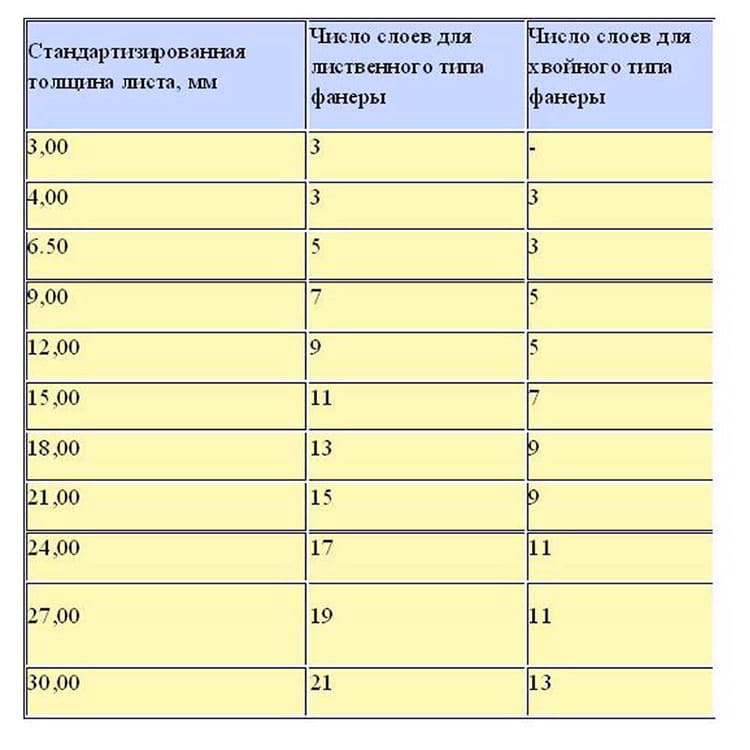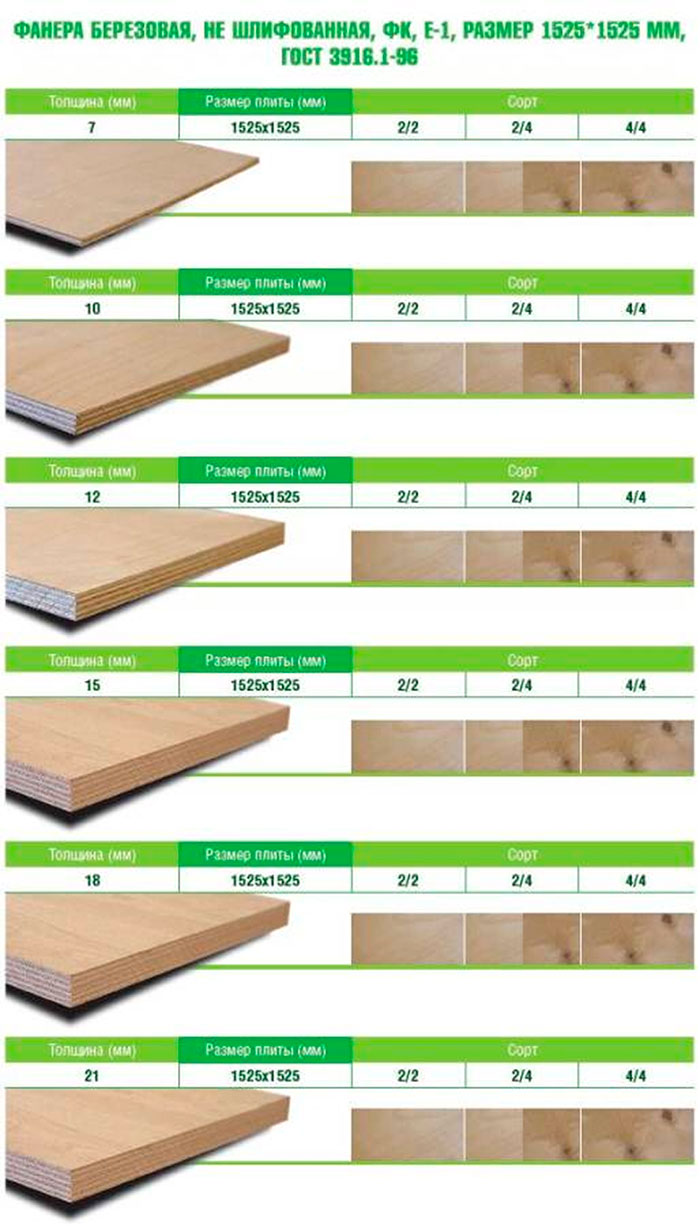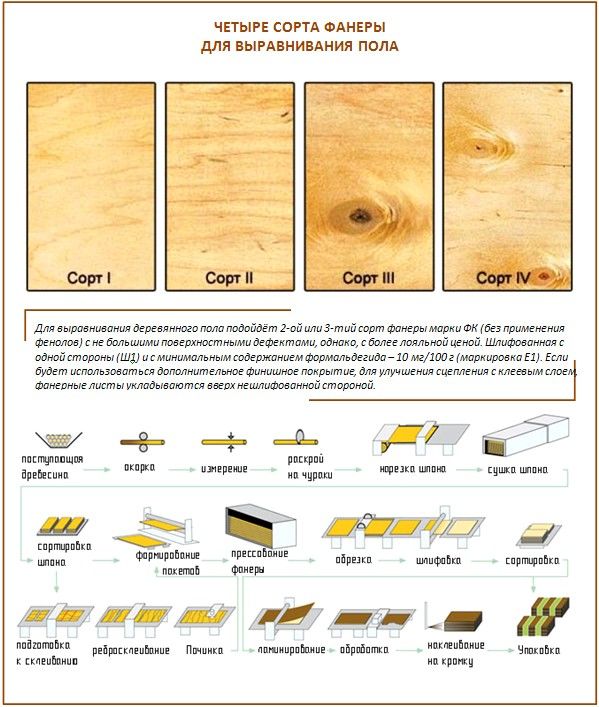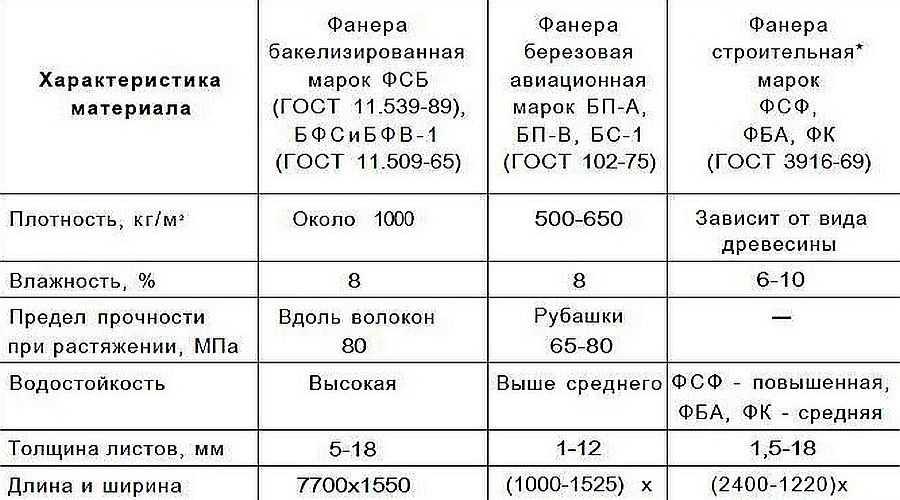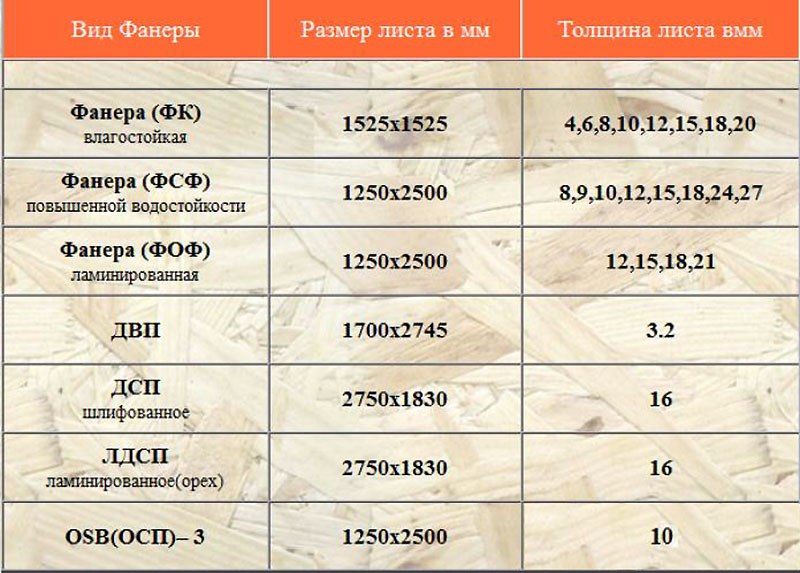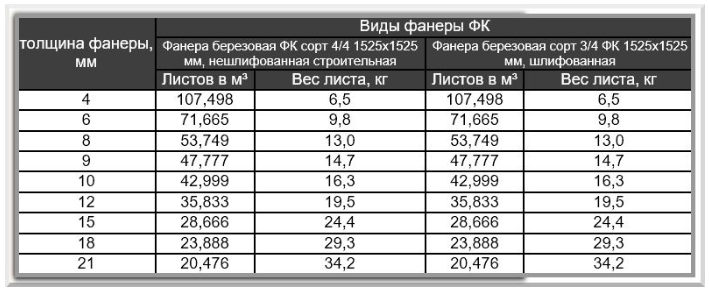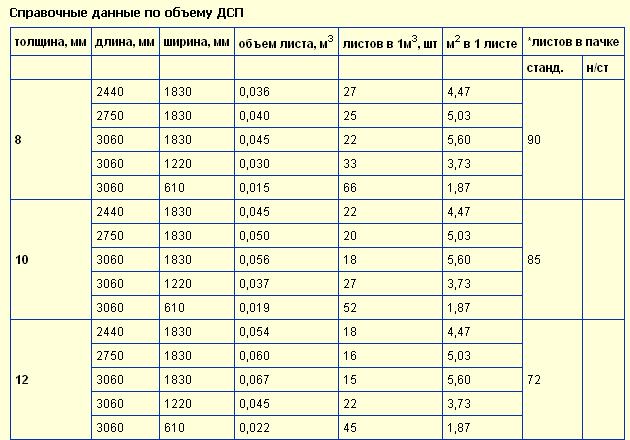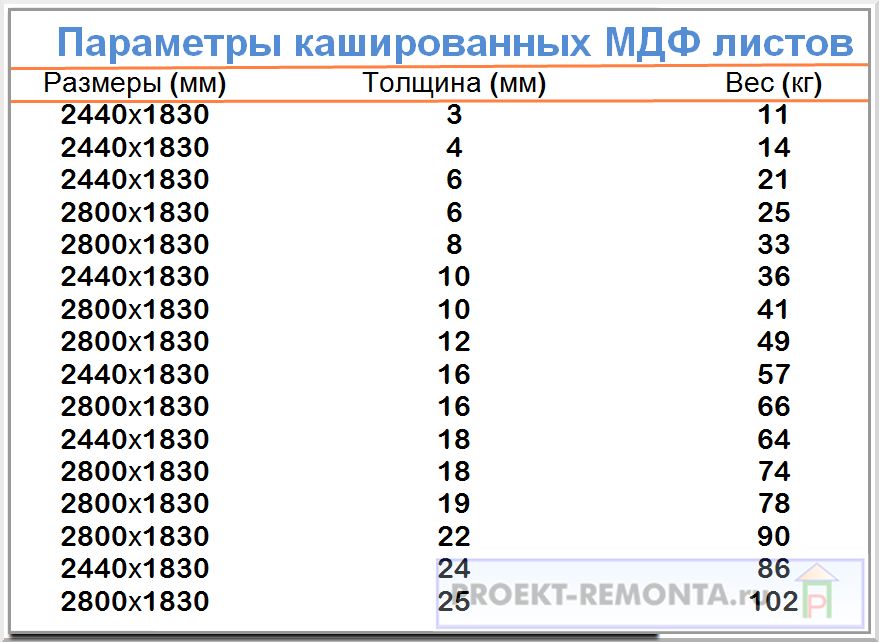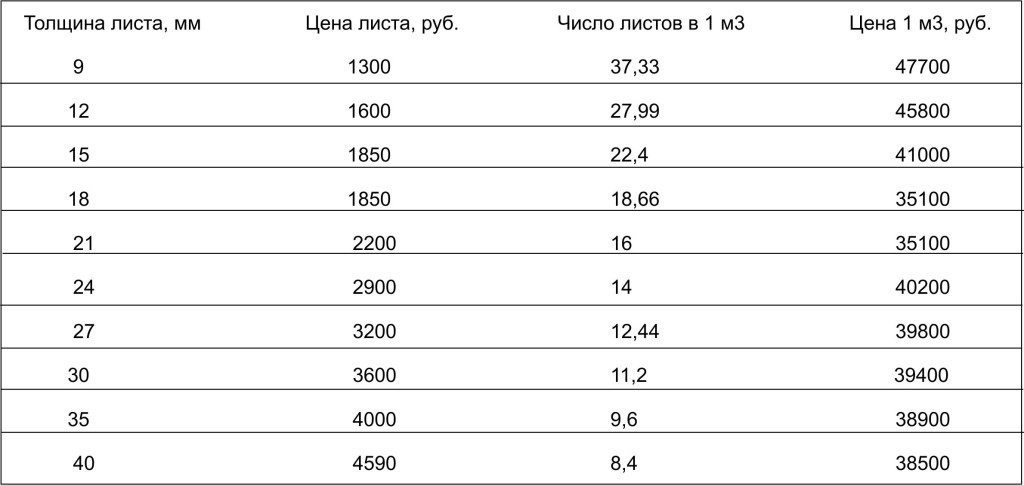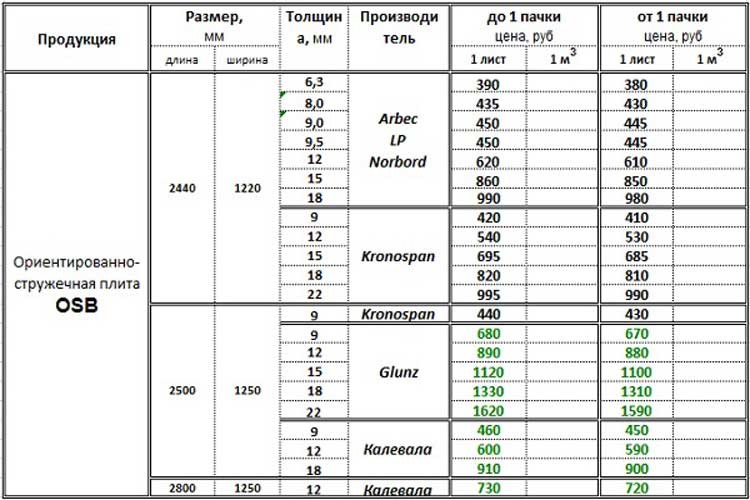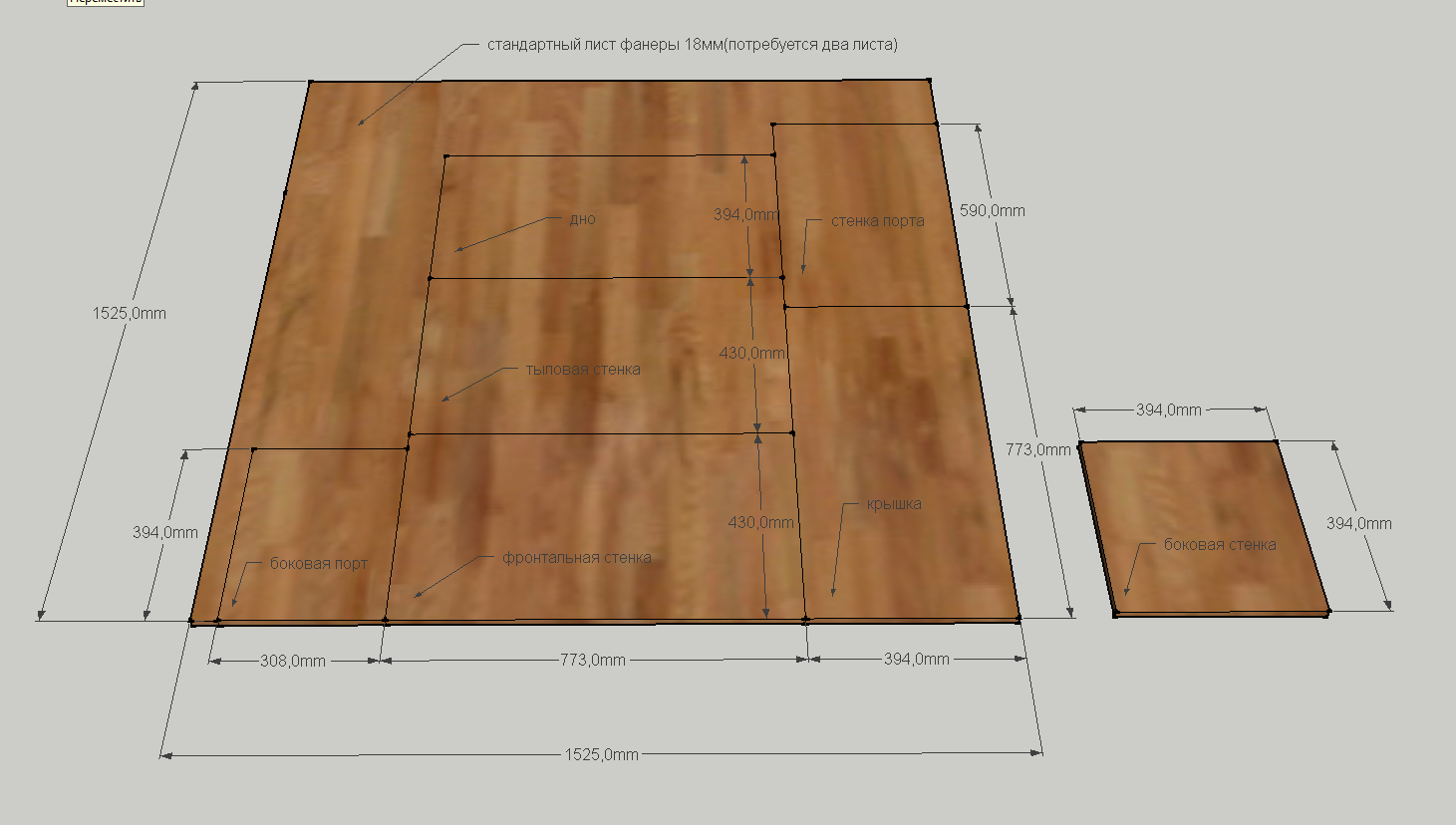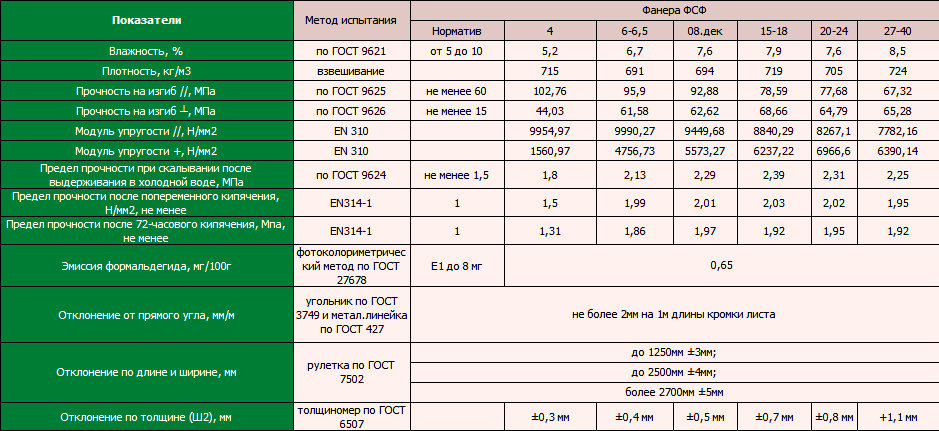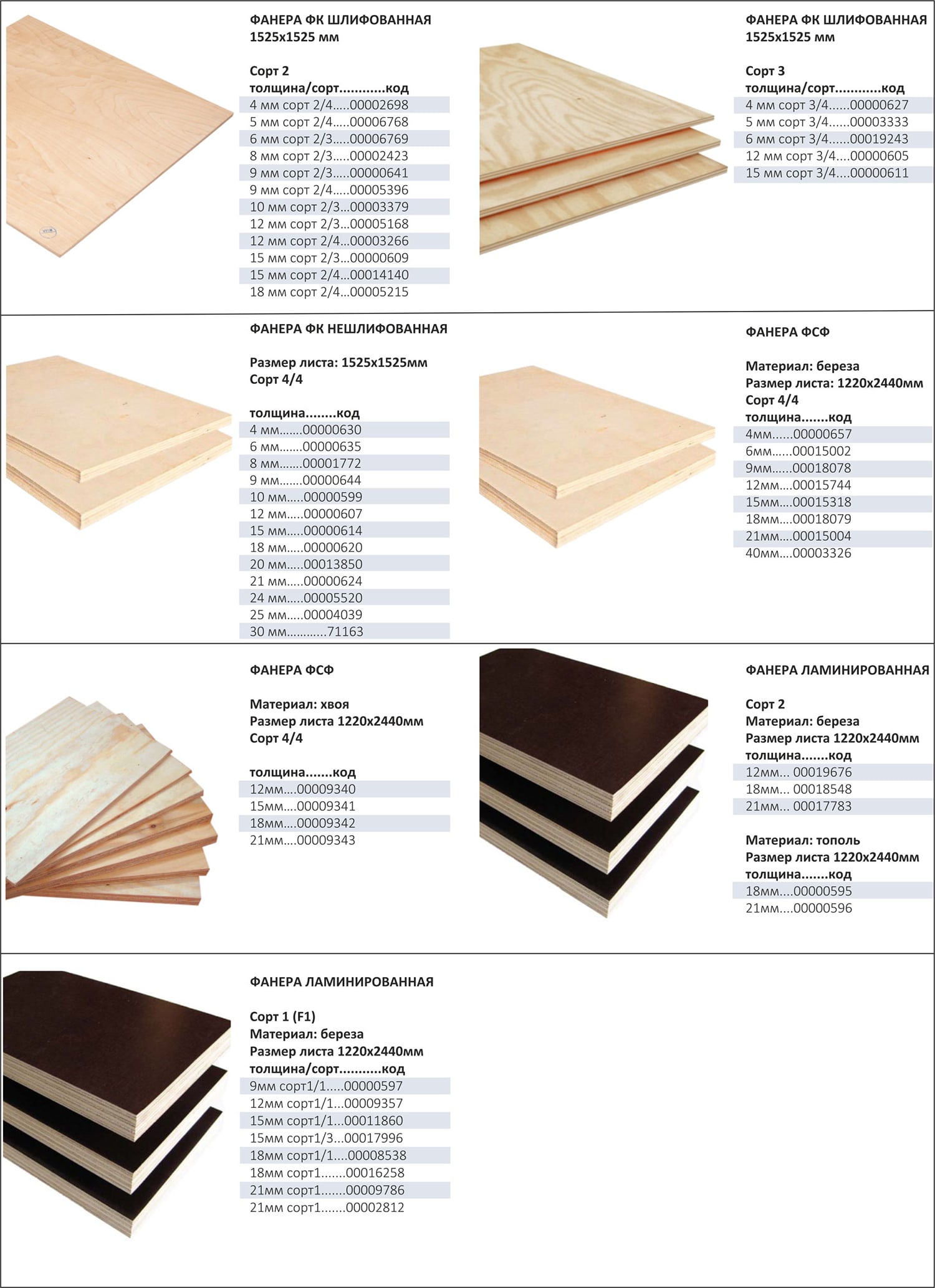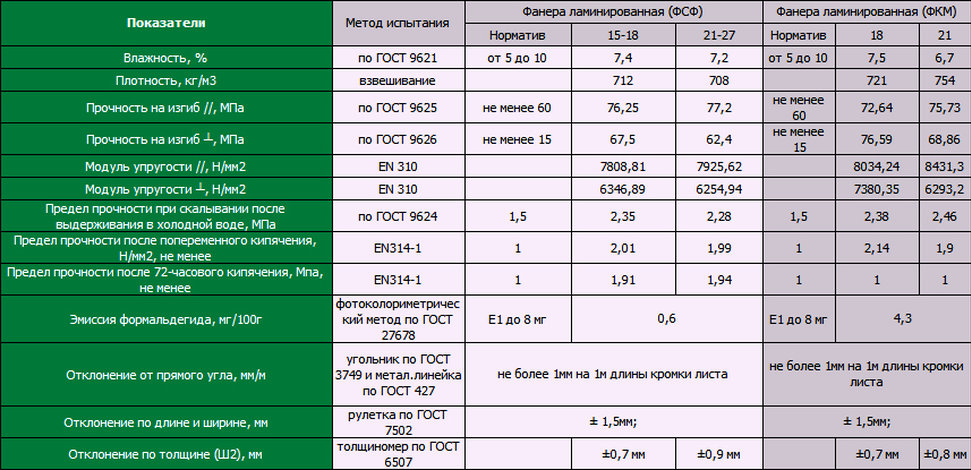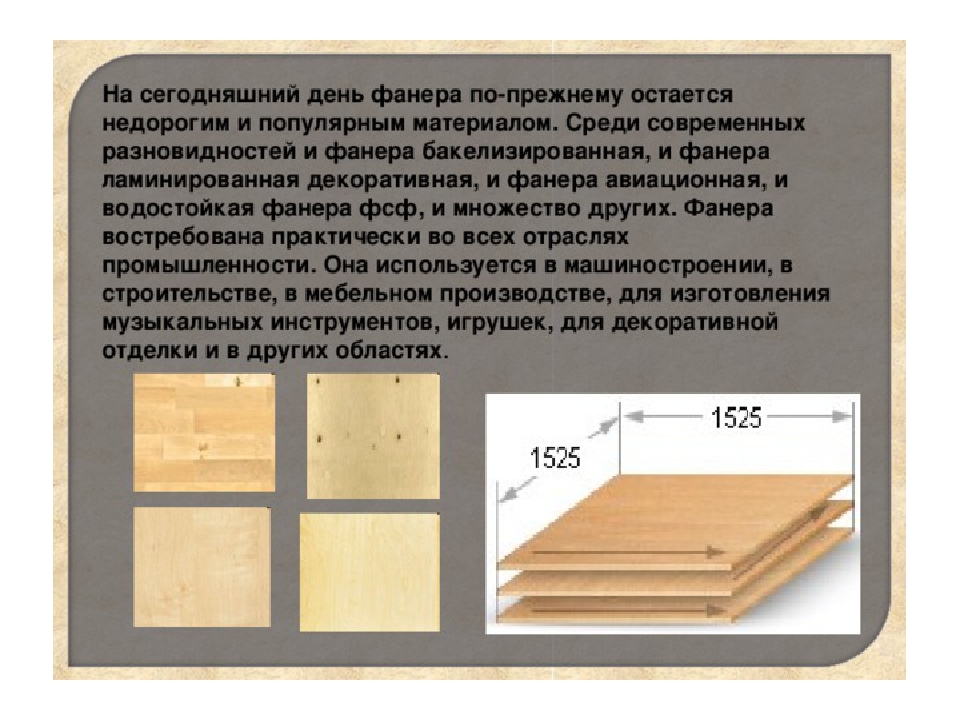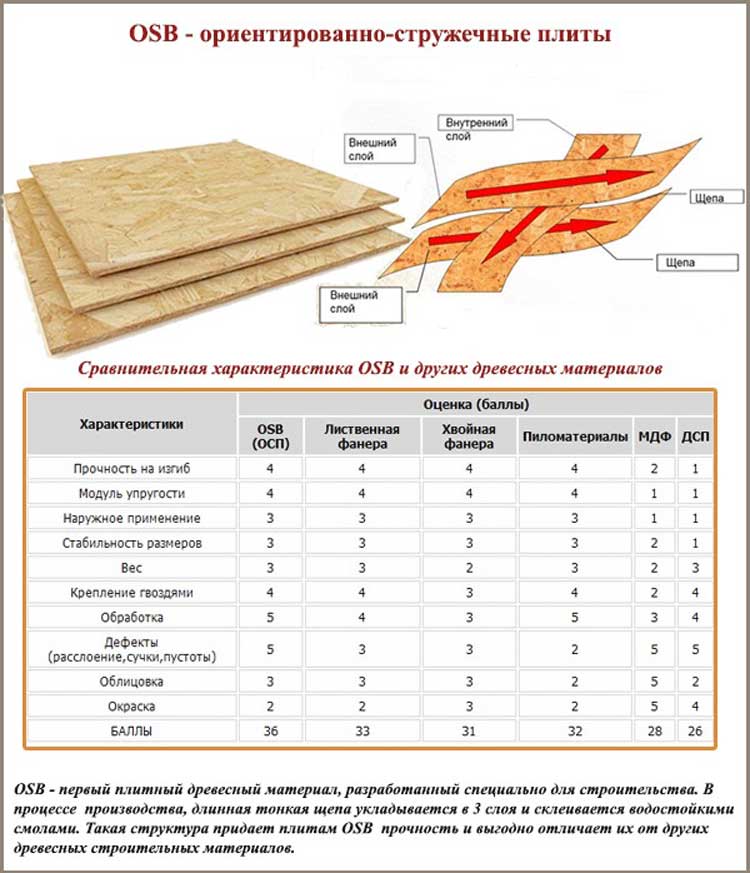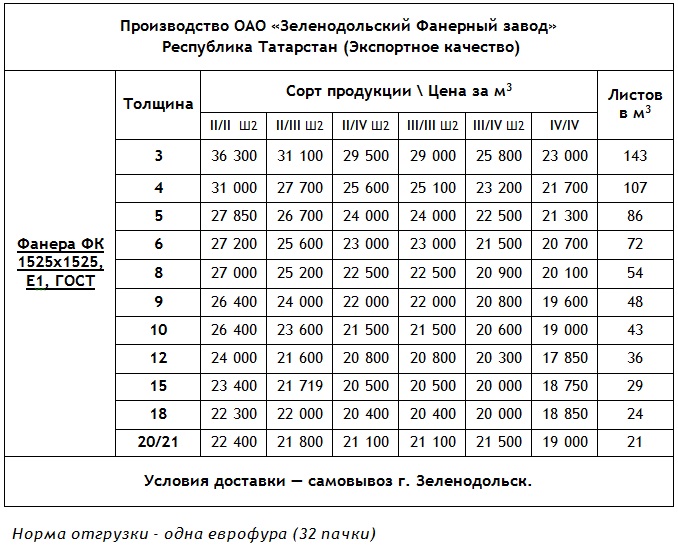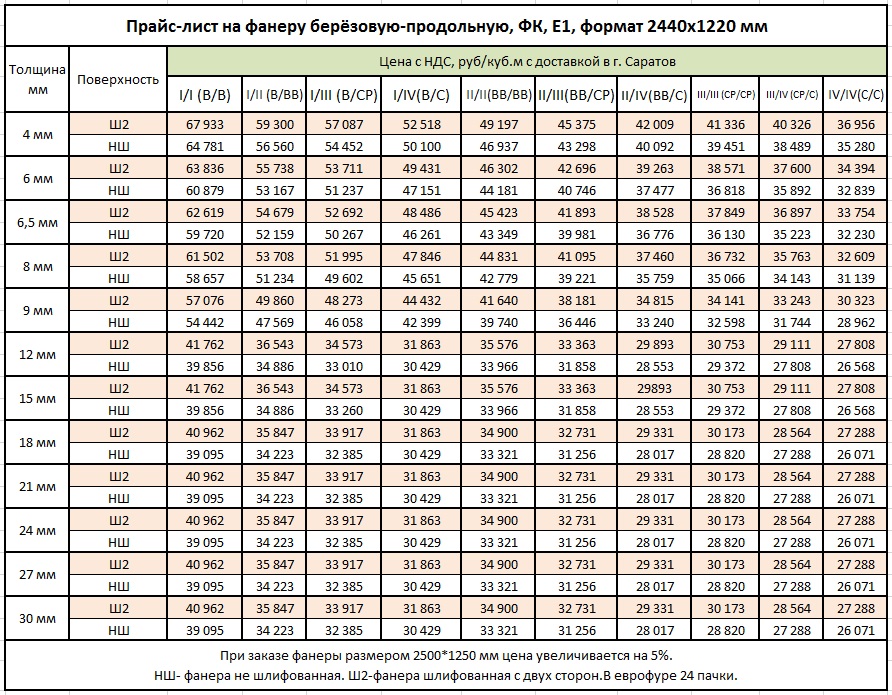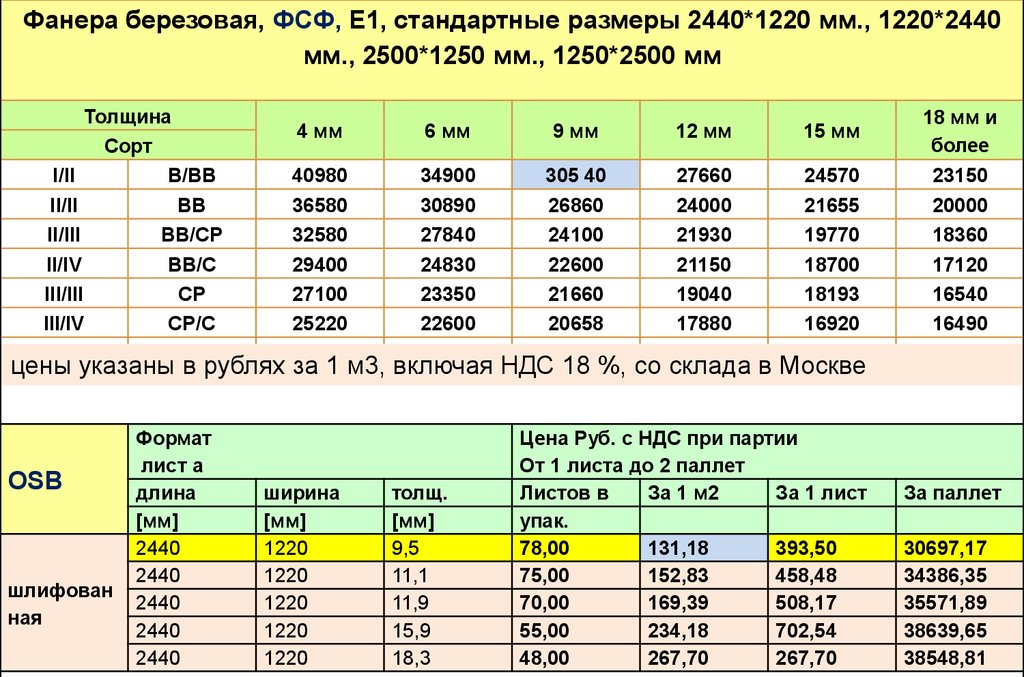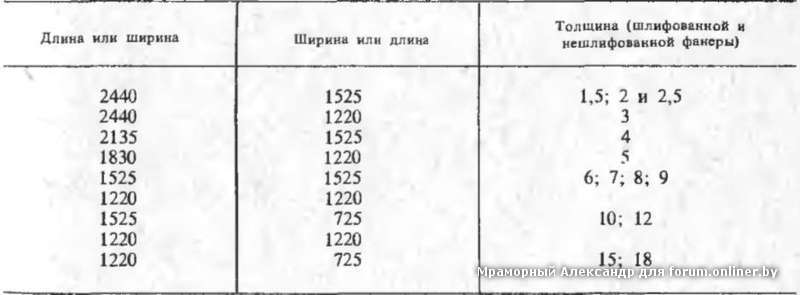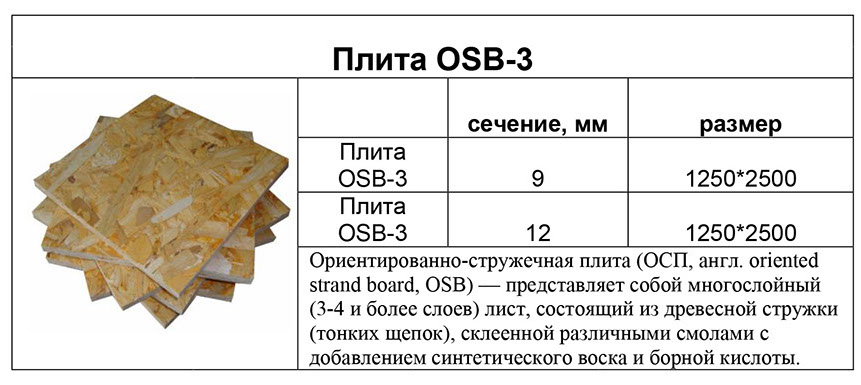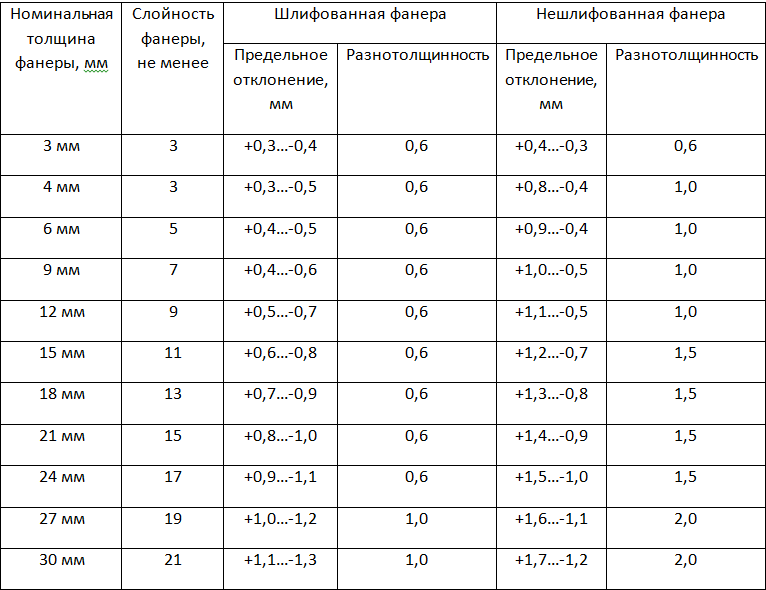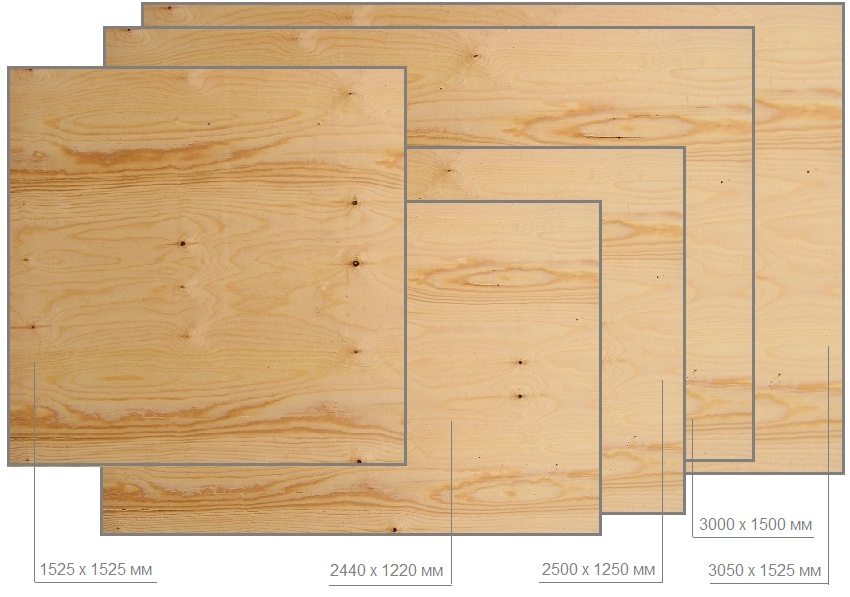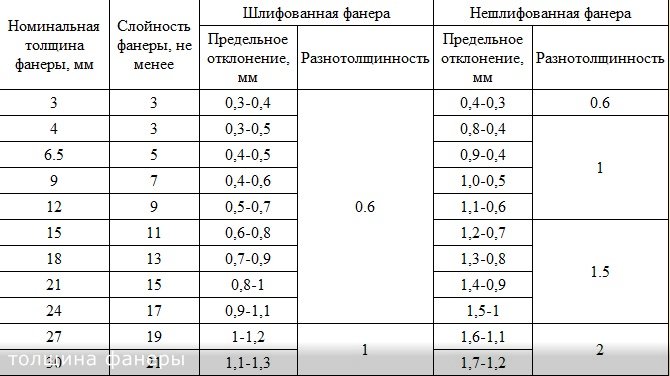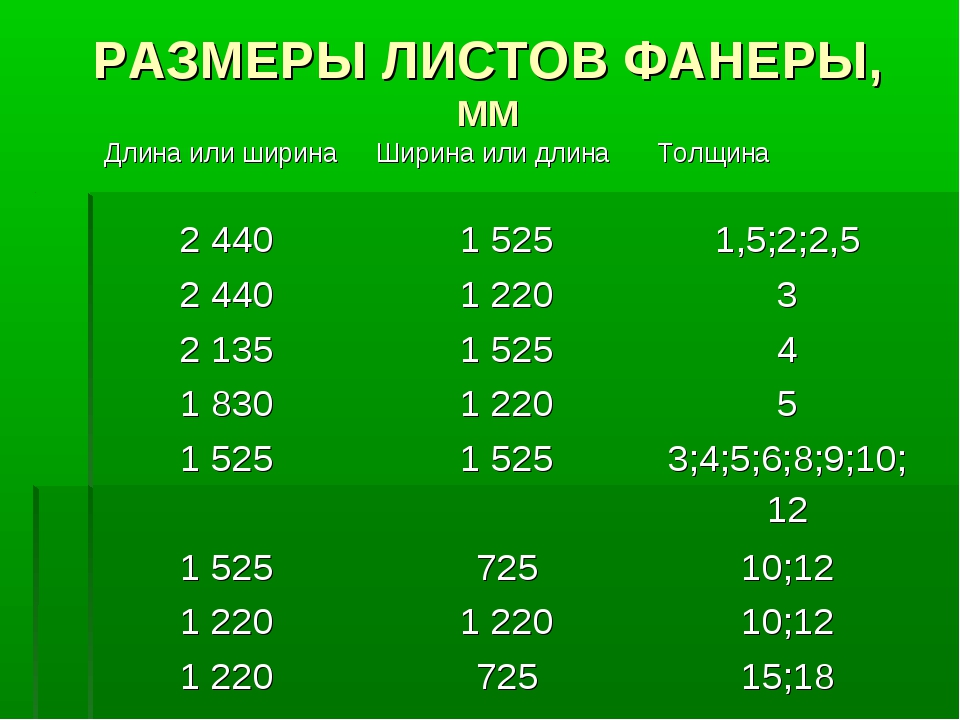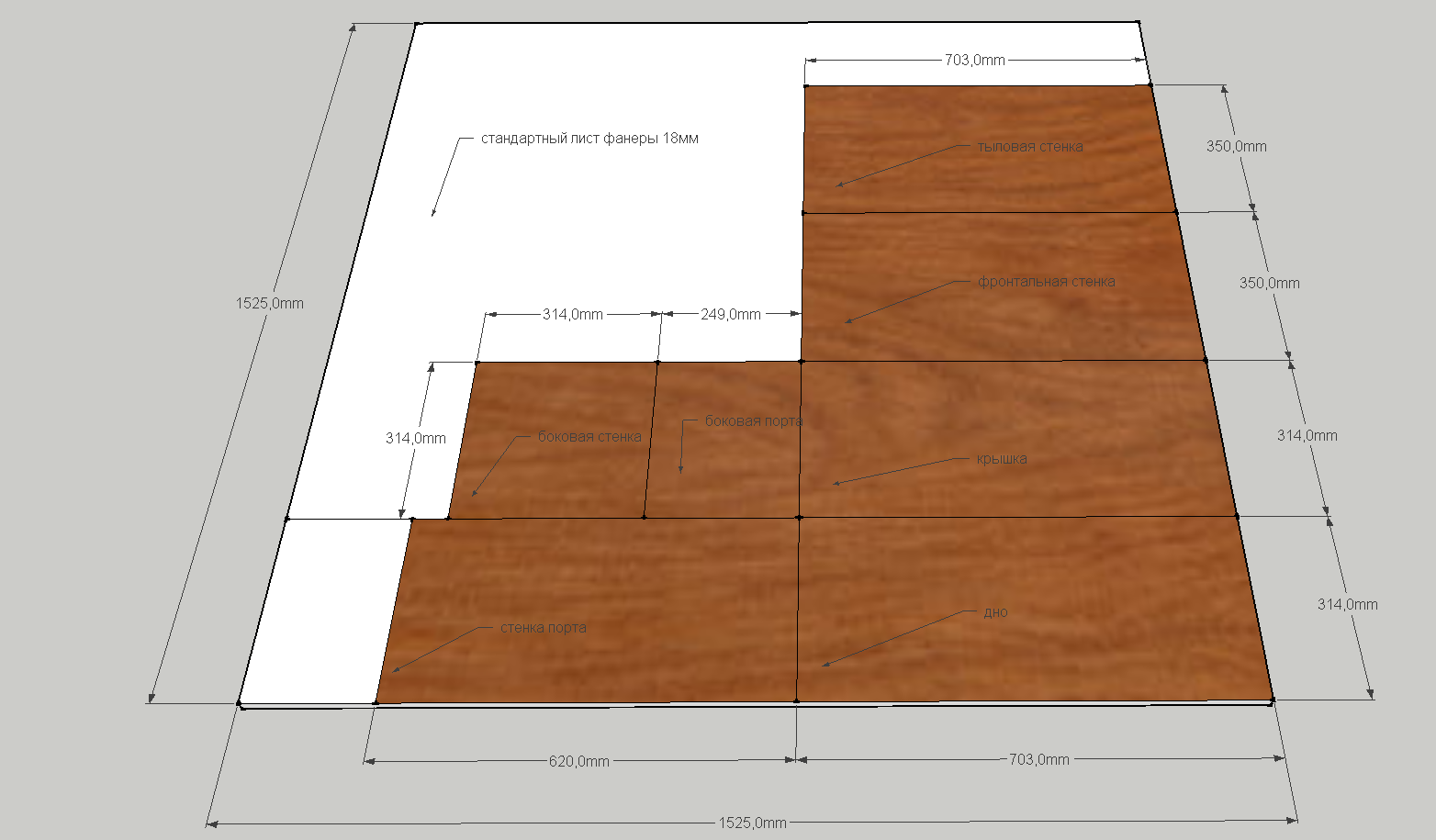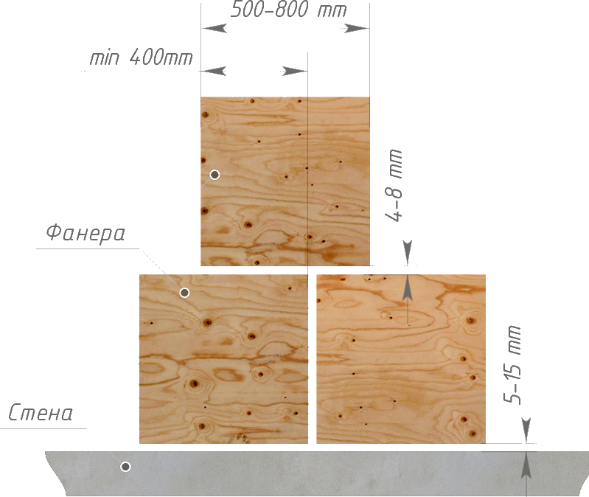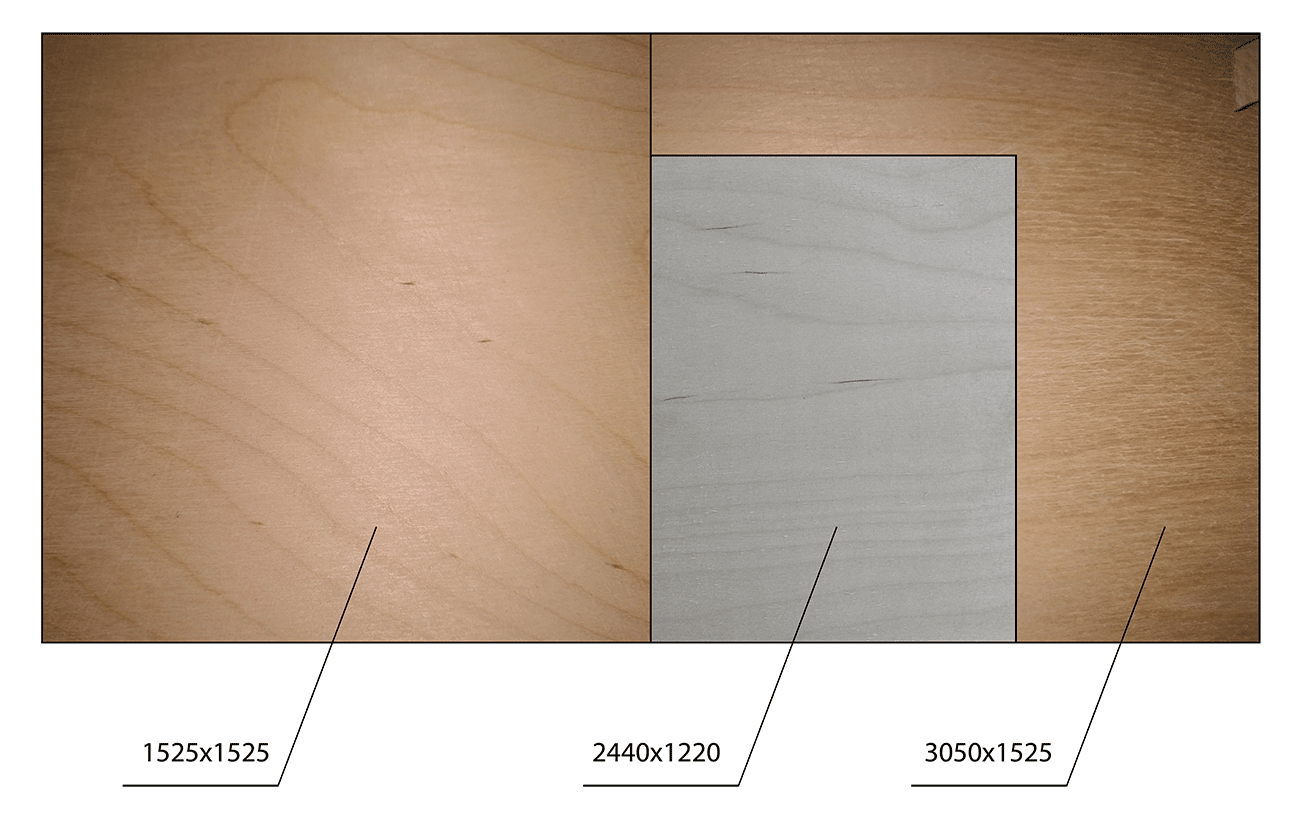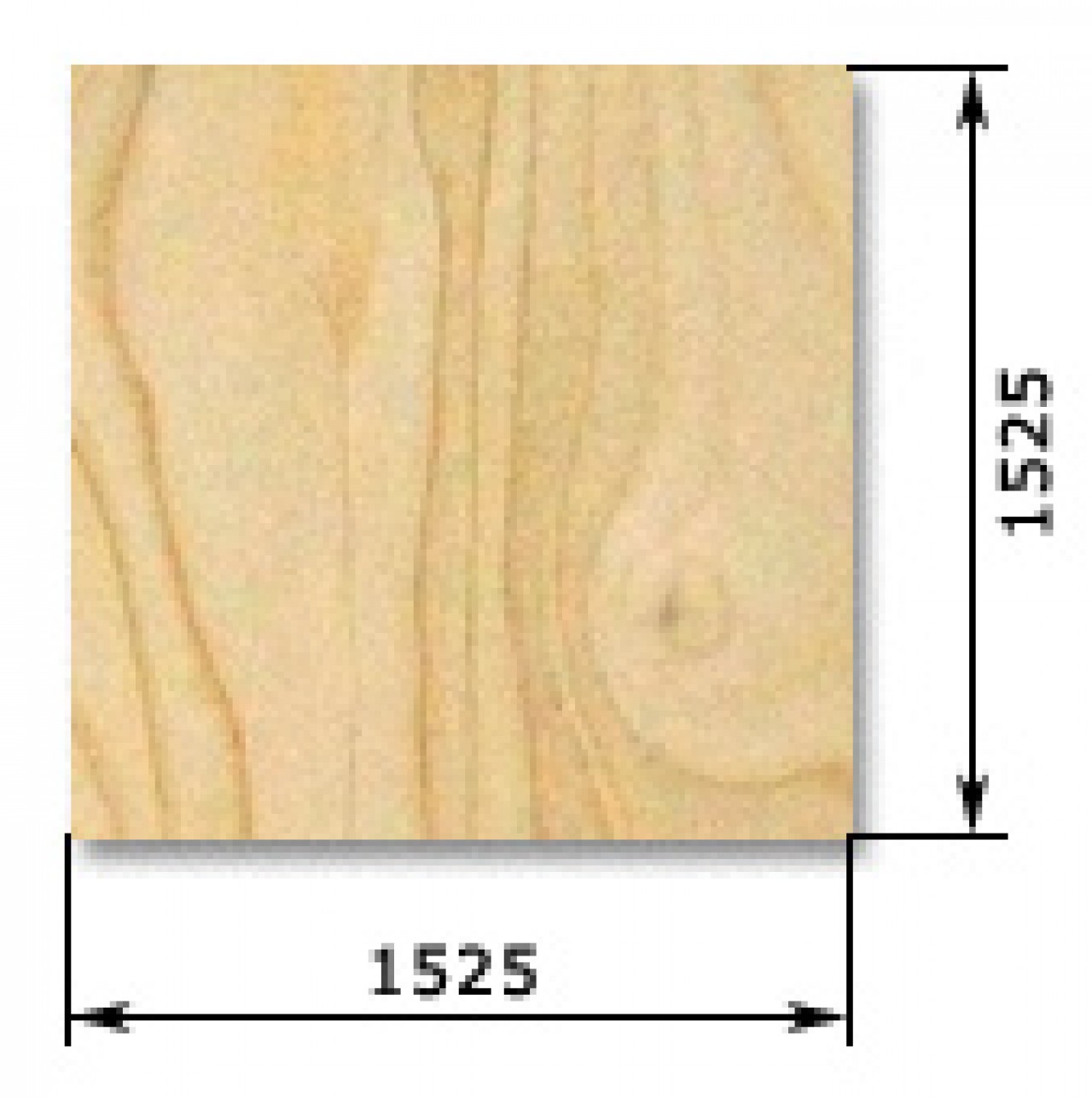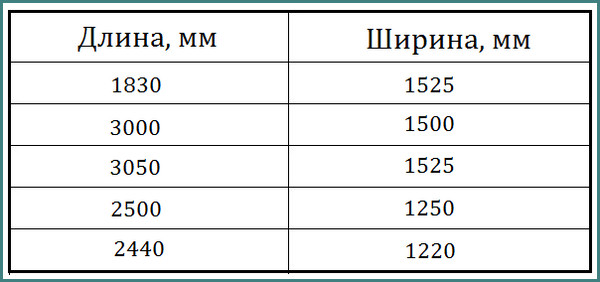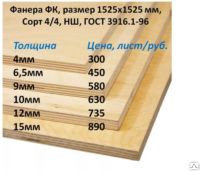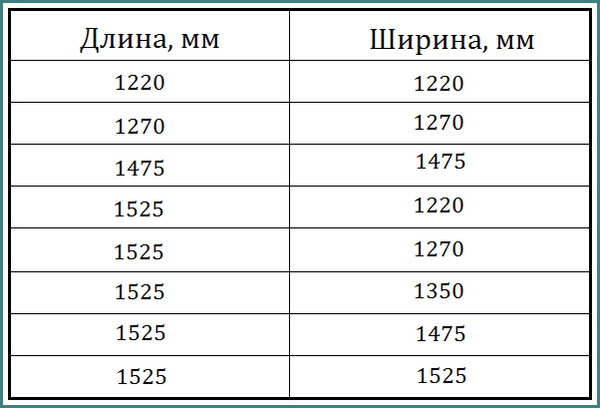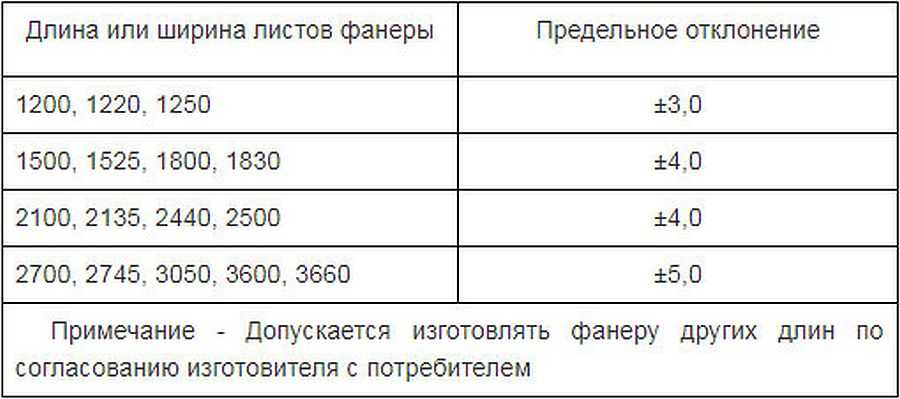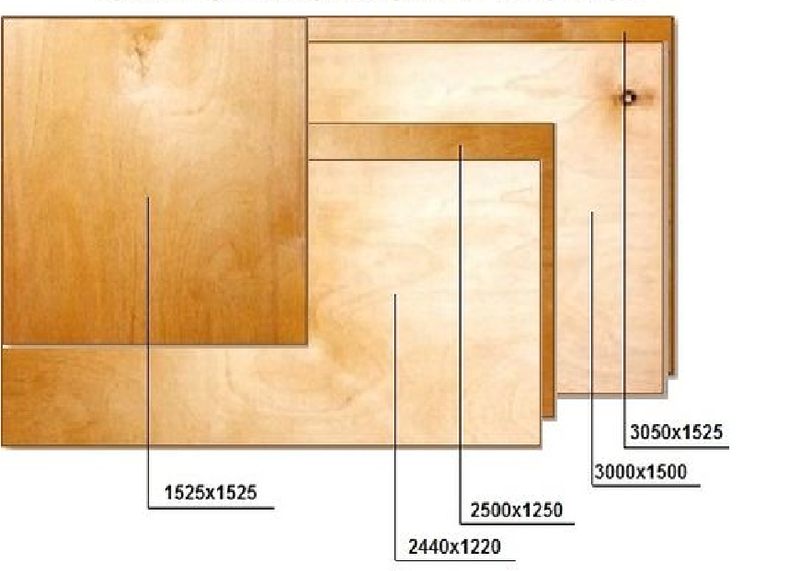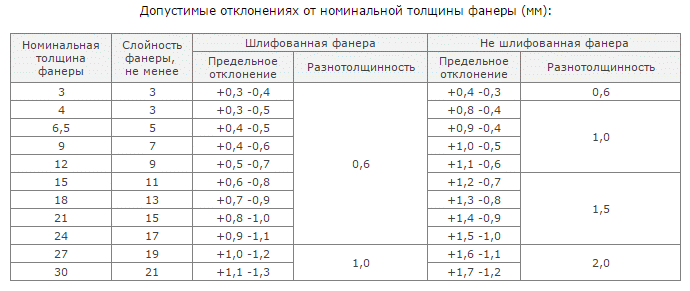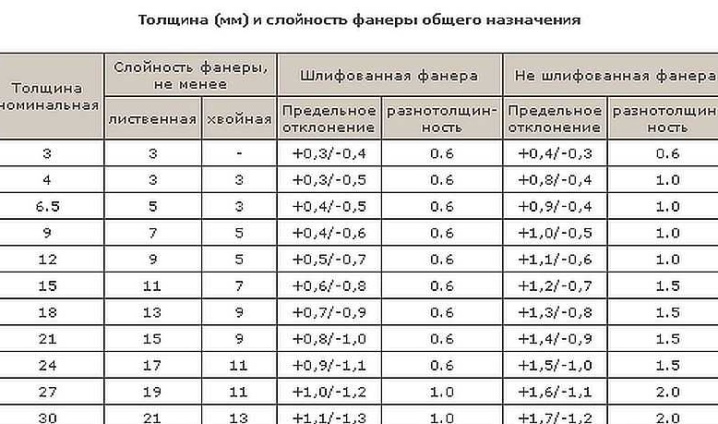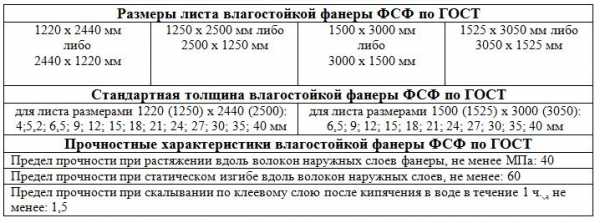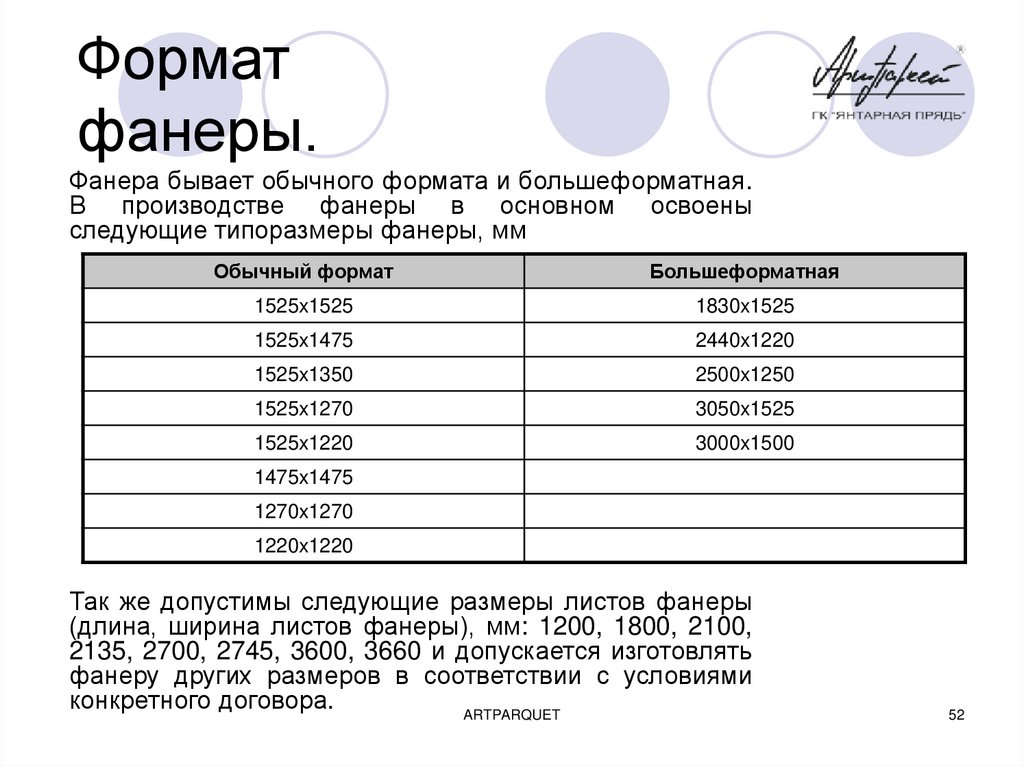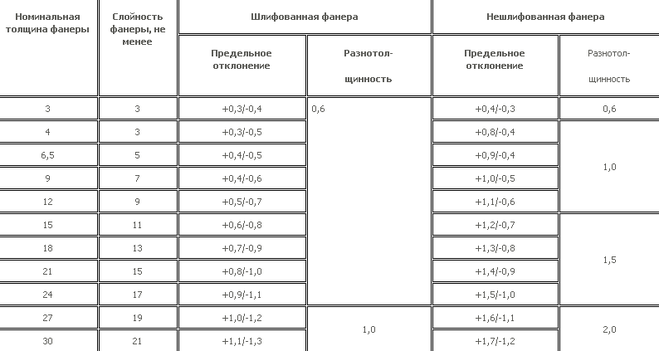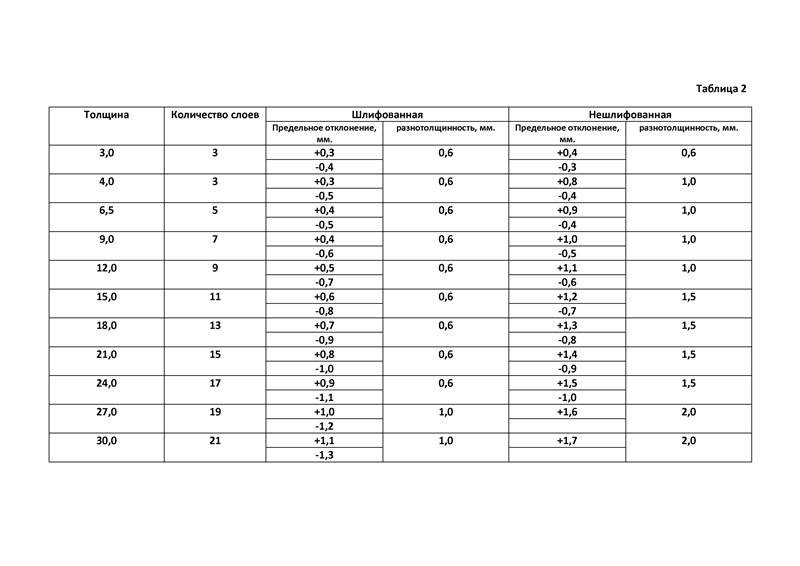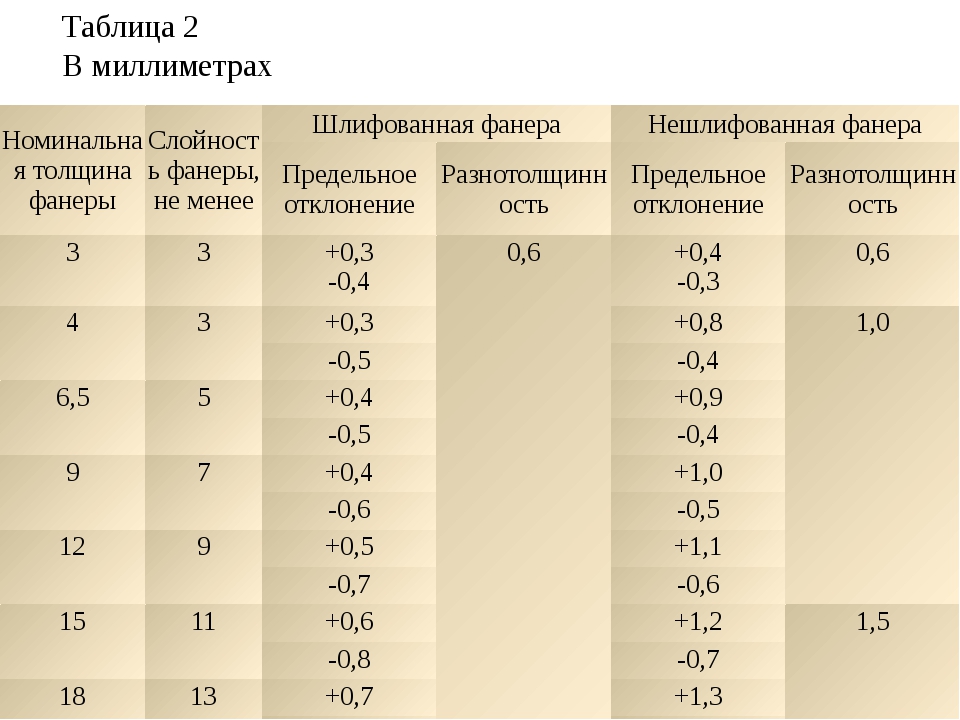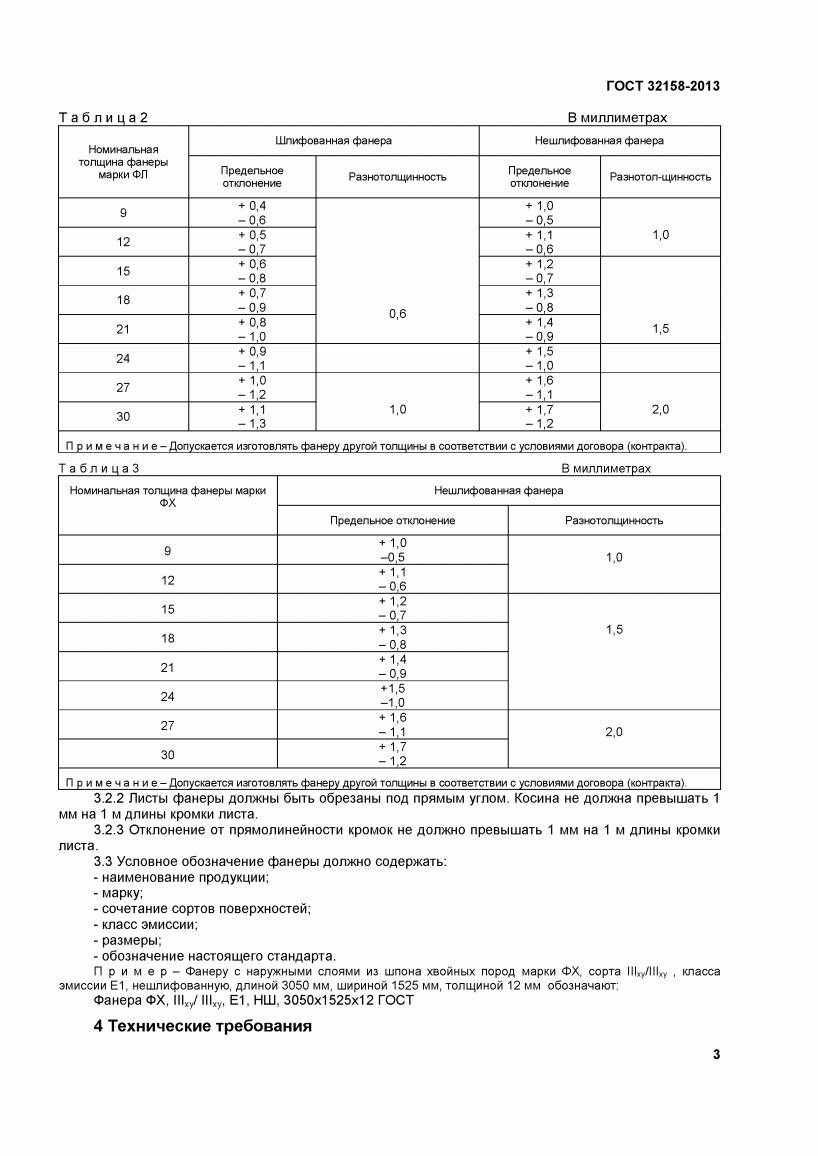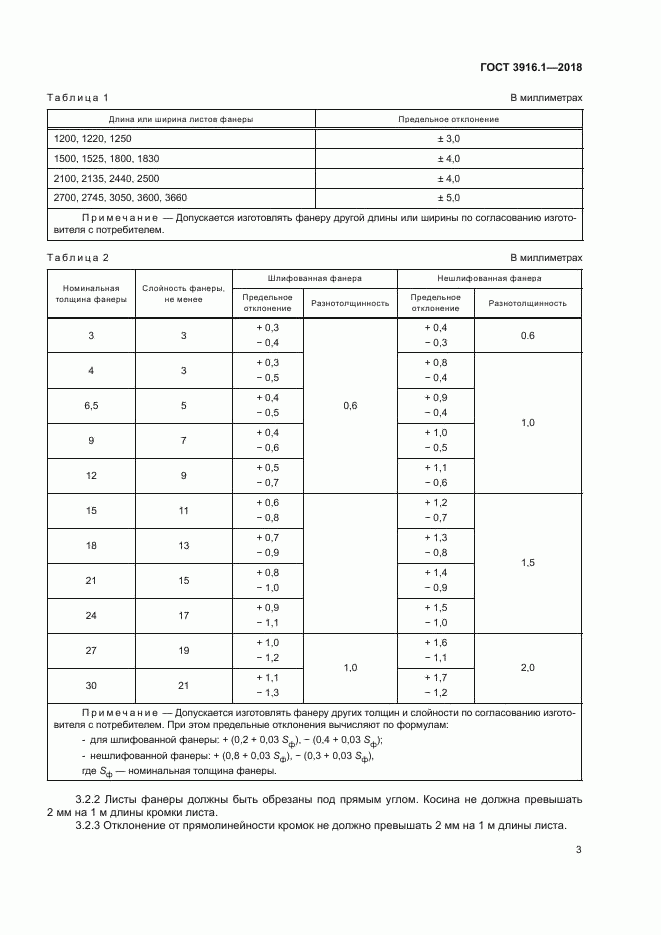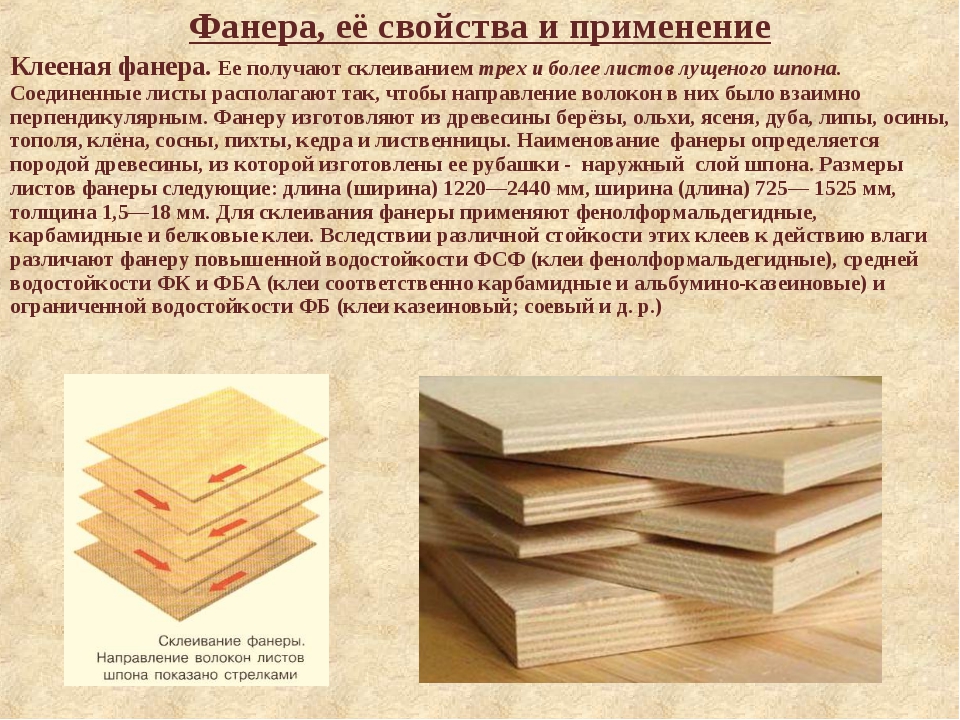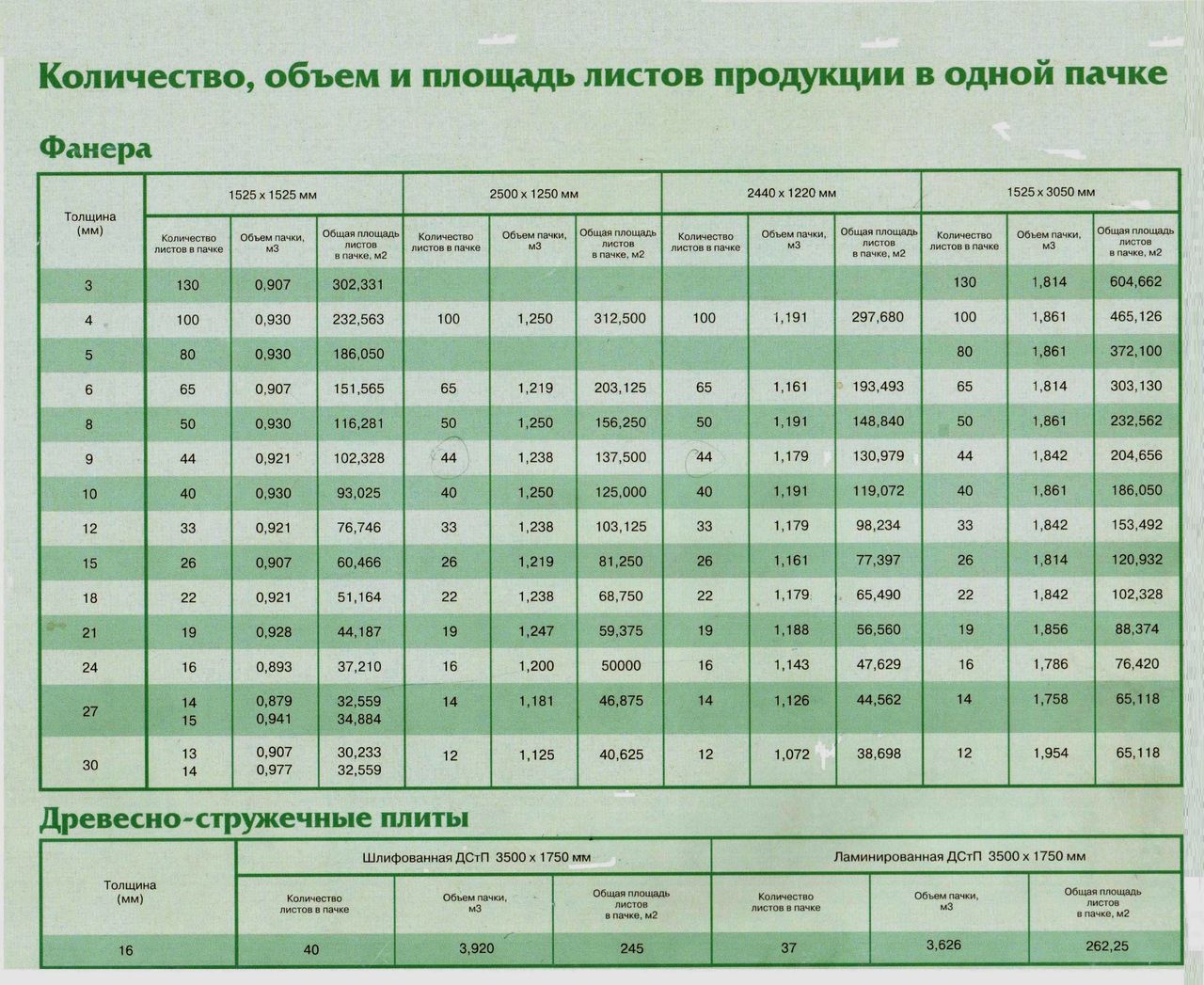Types of plywood and its classification
Plywood is a well-known and popular sheet building material for a long time. It has high flexural strength, both in the longitudinal and transverse directions. In private households, it is used for sheathing frames, flooring. Cheap grades are also used in some construction processes.
Plywood is made of several veneer layers glued together.
The fibers are layered in different directions. This increases the flexural strength of the material in all directions.
Plywood is one of the most famous and popular sheet materials in construction.
Plywood is made from softwood and birch. Birch is more expensive, more often used as furniture. Coniferous is made from all coniferous wood. Cheaper options - from larch, pine and spruce - can be used both for the manufacture of furniture and for construction needs (for example, for frame cladding or for removable formwork in the manufacture of concrete products). They can use Siberian cedar veneer. This type usually comes as a finishing material.
Layers and their number
There are at least three layers in plywood, but maybe more. The layers are arranged so that the veneer fibers are directed in different directions - alternately along the long side of the sheet, then across. An odd number of veneer layers is more common. In private housing construction, three and five-layer plywood is most often used. In this case, the orientation of the layers is selected relative to the central layer.
Layers are perpendicular to each other
If on the outer layer the veneer fibers are directed along the long side, the plywood is called longitudinal. It has great flexibility. If the veneer fibers are located along the short side of the sheet, plywood is called transverse and is used where high bending stiffness is required.
Moisture resistance
Since glue is used in the manufacture, the entire material has a fairly high degree of water resistance. There are several popular brands of plywood:
- Moisture resistant marked with FC. For its gluing, a glue based on carbamide-formaldehyde resin is used. That is, there is formaldehyde emission. With emission class E1 and below, it can be used indoors or for the manufacture of furniture.
-
Plywood of increased moisture resistance - FSF. The same glue is used only with water-repellent additives. Can be used for outdoor use.
- FSF-TV. The same water-repellent plywood but with flame retardant additives.
- Laminated - practically insensitive to moisture.
If you are looking for material for indoor use and don't want to worry about formaldehyde in the air, look for the FBA brand. It is environmentally friendly, but only suitable for rooms with normal humidity. The FB brand does not swell even under water, there is also BS aviation plywood. She still does not react to chemical environments. It was used in the construction of ships and airliners.
Surface finish
The outer layers of plywood can be sanded during production. There are such types:
- Unpolished. No surface treatment. Marked with NSh.
- Only one side is sanded to smoothness. Sh1 is added to the marking.
-
Both sides are sanded - Ш2.
Plywood sanded on both sides is used for the manufacture of furniture. For construction sites, both smooth sides are rarely needed. Usually, if polished is used, then Ш1. And then, if this material is used for decorative cladding. More often at a construction site, an unpolished one is needed - it provides better adhesion to other materials.
Price and material calculation
The cost of plywood depends on the size of the sheet, its thickness and grade.The latter is determined by the presence of defects on the surface of the material:
- Grade E - the sheet does not have any visible damage, defects and irregularities;
- I - minor flaws without knots, rot are permissible;
- II - small healthy knots are possible;
- III - knots are permissible, holes in size not exceeding 6 mm;
- IV - this type of product can have any damage up to 40 mm.
Table of the average cost of different types of plywood per sheet.
| Brand and thickness in mm | Variety | The size | Cost per sheet in rubles |
| FC 3 | 4 | 1525x1525 | 220 |
| FC 10 | 4 | 1525x1525 | 555 |
| FC 16 | 4 | 1525x1525 | 850 |
| FC 20 | 4 | 1525x1525 | 1090 |
| FSF 10 | 3 | 1525x1525 | 840 |
| FSF 15 | 3 | 1525x1525 | 1000 |
| FSF 27 | 3 | 1525x1525 | 2300 |
| FOF 9 | 1 | 2440x1220 | 1700 |
| FOF 18 | 3 | 2440x1220 | 1700 |
| FOF 30 (with mesh) | — | 2440x1220 | 5380 |
| Bakelized 10 | — | 2500x1250 | 3910 |
The most accurate way to calculate the number of sheets is to do a visual layout on paper. This way you can determine what size plywood is best to buy so that there is no waste left. When choosing dimensions, it is necessary to take into account the possibilities of transportation and transfer to the room: the height of the openings, the complexity of lifting to the floor, the presence of a freight elevator.
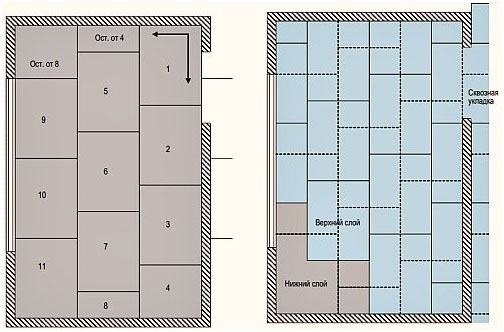 Laying scheme of the first and second plywood layer on the floor
Laying scheme of the first and second plywood layer on the floor
A simple method for calculating the amount of plywood for a floor, rectangular or square room:
- Calculate the area of the sheet;
- Measure the area of the room;
- Divide the second value by the first and round to the nearest integer. The resulting number is the required number of plywood sheets.
It is also recommended to provide a small margin in case of damage during cutting or installation.
Plywood is a versatile building material and raw material for furniture production. In terms of strength, it surpasses solid wood, while their cost is approximately the same. Due to the variety of overall dimensions, it is possible to select sheets or plates that are convenient to work and transport, suitable for different purposes and mechanical stress.
Plywood thickness and purpose
The thickness of the plywood sheet depends on the number of veneer layers. Each of them can be from 1 mm (peeled) to 3.5-4.0 (planed). Rotary cut veneer material is more flexible. In terms of strength characteristics, planed is better.
Sliced and peeled veneer production
The layers are connected with glue under the press, so that the direction of the wood grain in them does not coincide - this significantly improves the material's ability to withstand mechanical damage. The composition of the adhesive determines the level of moisture resistance and safety of plywood:
- FSF (glued with phenol-formaldehyde resins) - used only for non-residential premises and outdoor work, high moisture resistance (thickness 4-40);
- FKM (melamine resins are used) - average indicators of water resistance and safety;
- FC (formaldehyde and urea-formaldehyde resins) - used exclusively for internal work, does not withstand moisture (thickness 3-24);
- FBA (glued together with albuminocasein glue) is an environmentally friendly material, non-moisture resistant (they produce sheets with a thickness of 3-8);
- FB (or bakelite plywood) - withstands any environmental influences, including high humidity, open fire, mechanical damage (produced with a thickness of 7-40), is used in shipbuilding, car production, the construction of podiums, stadiums.
Bakelized (bakelite) plywood
Thickness 3 mm
Plywood with a thickness of 3 mm or less is called aviation plywood. Previously, it was used in aircraft construction, now it is used mainly in modeling. The material bends easily, so unusual interior things are made of it. Available in two sizes 1525x1525 and 1525x1830. Packaged in packs of 130 pcs. The total weight is 590 and 707 kg, respectively.
Thickness 4 mm
The scope of use of such a sheet is already wider. It is suitable for the production of furniture, wall decoration and even flooring. It usually consists of 3 veneer layers. The most popular size is 1525x1525.
Thickness 6.0, 6.5mm
Five-layer sheets for construction and furniture assembly. The thickness allows making fragments up to 3 meters long.The most common sizes: 1525x1525, 1220x2440, 1500x3000.
Plywood 8, 9.10 mm
A sheet of 7 layers of veneer. It is used both for decoration and for the production of furniture. The material will withstand the stress of a floor when laid in one layer. Available sizes: square 1525x1525, rectangle 3000x1500, 1220x2440.
Slabs 12, 15 mm
Plywood sheets that are thicker than 12 are called slabs. They consist of 9 or more layers of wood. They are used for the construction of structures with a heavy load: racks, partitions, floor.
Plates 18 - 30 mm
For the production of these boards, 15 or more layers of peeled veneer are glued together. When using sliced, their number is about 2 times less. Such plywood is very durable, it is used for the equipment of interfloor ceilings, floorings, formwork for the foundation, the construction of summer kitchens.
Plywood 35-40 mm
The thickest slabs produced by factories are used in the production of pallets, vibrating presses, tabletops, stairs. The sizes are various: 1220x2440, 1250x2500, 1500x3000, 1525x3050.
The standard provides for the maximum deviation of the sheet thickness from the declared one.
Maximum deviations allowed by GOST are invisible to the eye
Interesting: Standard brick - dimensions, characteristics, areas of use
Acceptance, quality control
Each batch of wood plywood is accepted according to the following criteria:
Plywood comes in 1-4 grades.
- each batch must be formalized with only one document with the inclusion of all the necessary data;
- sheets of a general-purpose product are checked selectively with control of strength, dimensions and number of layers;
- the concentration of formaldehyde in plywood must be within the limits of sanitary and environmental standards;
- general-purpose plywood should not contain veneer delamination and bubbles;
- humidity must comply with GOST 9621;
- the roughness of the outer surface must comply with the requirements of GOST 15612;
- sound absorption coefficient must comply with GOST 16297, factory hardness must not deviate from GOST 9627.1, thermal conductivity GOST 7076.
The product must be transported in closed transport. Transportation is carried out taking into account all transportation rules applicable to each type of transport separately. Storage is carried out on pallets only in a horizontal position in closed warehouses at temperatures from -40C to + 50C and humidity no more than 85%. The warranty period is within 3-6 years.
Summing up, I would like to note that with high requirements for the resistance of this material, it is recommended to use high-strength film faced plywood.
Pros and cons of using plywood for flooring
Plywood covering has a whole list of technical advantages in comparison with other types of building materials:
- the material has minimum moisture indicators - up to 15%;
- when excessive mechanical stress occurs, plywood extinguishes most of it, preventing damage to the concrete floor;
- in the manufacture, natural veneer is used without adding harmful impurities that are present in chipboard and OSB. It is worth noting that more and more people are laying OSB on the floor, since this material has proven itself well;
- the material plays the role of thermal insulation from rough floors;
- unlike pouring a cement screed, laying wood slabs on logs is a less time-consuming process;
- plywood has high resistance to bending, so it can withstand very heavy loads;
- There are several grades and grades of plywood that makes it suitable for use as a rough and finish flooring.
Among the disadvantages of laying material on logs, the following points can be distinguished:
- poor resistance to large temperature changes;
- the material is afraid of moisture, so it is advisable to use it in dry rooms.
Main dimensions
The veneered layers from which the plywood is made are bonded with various adhesives and cured under a press until they are fully adhered. Lay these layers on top of each other so that the direction of the wood fibers in the previous layer does not coincide with the direction of the next layer. This method improves the strength of the material to bending and other mechanical damage. The minimum number of veneered layers in a plywood sheet is made at least 3 - in this case, the size of the sheet thickness is marked as 3 mm. The largest number of them is 21 sheets, but the thickness of the finished material can be in the range of 30-40 mm.
Plywood dimensions may differ in width and length, each of these parameters is measured in millimeters. According to their size range, plywood sheets can be large, for example, 2000x3000 or 2000x3500 mm, and small, for example, squares 1220x1220 mm. The indicator of the standard size of the thickness of the material directly depends on the number of veneered sheets glued together. The thicker the slab or sheet, the stronger this material is.
Standard
Small errors in the dimensional parameters of the plywood sheet are also regulated by the state standard. GOST, adopted in our country, allows the manufacture of these woodworking products in any size, at the request of the consumer.
The most common dimensions for plywood are 1220 and 1525 mm. The length of the product can be limited to 1525 or 2440 mm. Such parameters are in demand among consumers, since they are easier to use during operation, and they can be transported by low-tonnage vehicles. Plywood materials with large format or non-standard parameters are 3500 or 3660 mm long and 1500 or 1525 mm wide. Sheet materials with a similar cut are often used for finishing work when decorating large areas or for production needs.
Non-standard
Small format wood panels are also popular. On sale you can see products with the following dimensions: 1220 by 1220, 1220 by 1525 or 1525 by 1525 mm. This minimal cutting is convenient in that 1 person can handle a sheet of plywood without the involvement of third-party assistants. On the other hand, cladding with such sheets results in too many joint seams, which sometimes is not a good solution.
With a large format, sheets are most often in demand, the sizes of which are: 1525x1830, 1220x2440, 2500x1250, 1500x3000 or 1525x3050 mm. Such product parameters are not found in every manufacturer - someone produces only a part of the listed formats or is guided by their own dimensional standards.
If we start from the standards of GOST, adopted in 1975, then the dimensions of the sheet material are as follows:
- the length of the sheet is made from 1000 to 1525 mm, the interval of increasing the dimension is 25 mm;
- the width of the sheet is made from 800 to 1525 mm, the interval of increasing the dimension is also 25 mm.
Due to the fact that plywood is not subject to particularly precise requirements for compliance with dimensions, typical values may deviate from the requirements of the standard up to 0.5-4 mm in length and width, and by 0.5 mm in thickness.
Design
Plywood board is a sheet of wood veneer glued into a monolithic whole on special equipment using formaldehyde resins. For the outer layer, the thickness should not be higher than 3.5 mm, and for the inner layers, it should not exceed 4 mm. Plywood can be assembled using different technologies, using veneer of one type of wood or from several types of wood. According to these indicators, it is divided into homogeneous and combined, which may include various types of deciduous or coniferous cuts. The arrangement of fibers in the sheets can be parallel or mutually perpendicular, and also differ in symmetry.
Veneer for plywood production
Veneer is the main element of plywood, which is thin sheets of wood with a thickness of 0.1 mm to 8 mm. To understand the peculiarities of plywood, you need to tell in more detail about the veneer from which it is made.
Normative base
Veneer production is regulated by the following regulations:
- GOST 99-96 "Peeled veneer"
- GOST 2977-82. "Sliced veneer"
- GOST 99-89. "Rotary cut veneer" (obsolete)
There are three main ways to produce veneer:
- Peeling;
- Planing;
- Sawing.
Rotary cut veneer
For the peeling operation, special peeling machines are used. The principle is as follows - a churak (a sawn tree trunk, cleaned of bark) rotates around its own axis, and a special knife of a peeling machine, located parallel to the log, cuts off a thin layer of wood of a given thickness from it. As the block rotates, the knife moves to its center, thereby providing a uniform veneer thickness. For peeling, both coniferous and deciduous wood species can be used:
- Pine;
- Birch;
- Linden;
- beech;
- oak;
- maple;
- ash;
- fir;
- cedar;
- alder;
- aspen;
- spruce
etc.
Sliced veneer
To obtain sliced veneer, the wood surface is cut (planed) on special machines. In this case, the width of the veneer obtained does not exceed the width of the planed bar.
By varying the different angles of the knife relative to the longitudinal axis of the bar, a different pattern and texture can be obtained. Both coniferous and deciduous wood species can be used for planing:
- Pine;
- Birch
- beech;
- oak;
- pear;
- elm;
- chestnut;
- Red tree;
- Linden;
- ash;
- alder;
- maple;
- velvet tree;
- nut
etc.
Sawn veneer
This is the simplest and oldest method, in which a plate with a thickness of 0.5 - 5 mm is simply sawed off from the workpiece. For the manufacture of sawn veneer, both coniferous and deciduous woods are mainly used:
- Pine;
- Birch
- beech;
- oak;
- Linden
etc.
Fine-line veneer
If the above types of veneer production result in a thin sheet of wood, then fine-line veneer is an artificial veneer. It is based on wood, but there is also glue and dyes (about 8%). For its manufacture, a natural veneer from soft wood is taken, soaked in special solutions and dye, after which it is glued and pressed under high pressure into special packs. Subsequently, these pressed bundles are cut into ultra-thin sheets, which are called fine-line veneers.
The resulting veneer has a number of advantages:
- as well as natural veneer it is environmentally friendly;
- has no defects on the surface, unlike traditional 100% veneer;
- any pattern, texture, or just a solid color can be applied on it;
- high - elasticity and flexibility;
- inexpensive types of wood are used for its manufacture, which makes it less expensive compared to traditional 100% veneer;
- moisture resistant, that is, it can be used in rooms with high humidity.
However, there are also disadvantages, namely:
- Low strength (fragility). Due to the use of soft wood, it is subject to deformation under mechanical stress;
- Possible cracking. To increase the strength, the material is coated with varnish, which, under certain influences, can form cracks.
- The presence of artificial components (8% of glue and dyes) in the composition does not allow this material to be classified as 100% ecological.
Fine-line veneer has a wide range of applications. For example, it is widely used in the manufacture of furniture, doors, floor coverings, as well as various decorative materials for creating interior design solutions.
Sheet thickness
Plywood grades.
There are several types of these products that have different parameters in thickness.
The most popular among consumers is coniferous plywood, which is an indispensable tool for installing a base for floor coverings and is widely used in the manufacture of furniture and in repair and construction work. With a slab size of 1220 × 2440 and 1225 × 2500 mm, there is plywood with the following thickness in millimeters:
- 6;
- 10;
- 12;
- 16;
- 19;
- 22.
Selection of veneer for plywood grades.
The cached type of plywood boards is made using a double-sided paper coating impregnated with a special type of synthetic resin.This treatment allows plywood to be used outdoors and is well suited for dyeing. The standard size sheet of 1220 × 2440 mm can have a thickness of 6, 8, 10, as well as 12, 16 and 19 mm. Most often, cabinet furniture and formwork are made from it.
The presence of fine wood veneer on the surface distinguishes decorative plywood, which is indispensable for aesthetic finishing in interior design and furniture production. It comes in the following thicknesses: 3, 6, 10, 12, 16 and 19 mm. For the same purposes, there is a type of this material made of birch veneer, which holds well all types of fasteners. Square sheets 1525 × 1525 mm have thickness parameters of 4, 6, 9, 12, 15 and 18 mm. Birch plywood is of the American variety of the Appleply brand, with a minimum size of 6, and a maximum of 25 and 32 mm. Its disadvantage is its rather high price.
Flexible plywood has the smallest variation in ply size variations. The slab, assembled from perpendicular wood cuts, has a thickness of 3 or 10 mm and a size of 1220 × 2440 mm.
What is she like?
Several types of plywood are distinguished depending on moisture resistance. A person not familiar with them may get confused when they notice strange markings in the store. Let's consider each in more detail. What are the characteristics, the thickness of each of them.
FC - plywood, the layers of which are connected with urea glue. Moisture resistance indicators for this species are quite low. Therefore, this type is used only when decorating premises or in the manufacture of furniture.
In terms of quality, 4 types can be distinguished:
- minimal external flaws;
- small inserts of knots and veneers;
- a large number of defects, cracks and knots;
- the lowest grade, which at the same time has a high gluing strength.
Thickness: 3-10, 12, 15, 18, 21 mm. Density: 640 - 700 kg / m3.
FSF - phenolic resins are used in the production process of this type. It is one of the most sought-after materials in the building industry. Firstly, such plywood is quite moisture resistant. Secondly, it has high strength and wear resistance.
FSF can be used for interior decoration. For external work such as roofing.
The nominal humidity does not exceed 10%. Thickness: 6, 9, 12, 15, 18, 21, 24, 27, 30, 35, 40 mm. Density: 640 - 700 kg / m3.
FB, BS, FBS - this type of chipboard is produced by gluing veneer with bakelite glue or varnish. Such plates are used in aviation and shipbuilding. They have the highest strength and water resistance. This makes it possible to use this type in the most extreme conditions, with high humidity and high pressure.
No matter what material was used in the manufacture, the nominal humidity remains the same as in the previous case - no more than 10%. Thickness: 5, 7, 10, 12, 14, 16, 18 mm
Density: 1200 kg / m3
Thickness: 5, 7, 10, 12, 14, 16, 18 mm. Density: 1200 kg / m3.
BV - plywood impregnated with a special water-soluble glue. It's called Bakelite. This type has retained all the characteristics and indicators of the previous one. The only thing that distinguishes it is the glue, which, as we see from the name, dissolves when exposed to water.
FOF is a laminated type of plywood. From above it has a cladding film coating. The board is impregnated with synthetic resin.
Thickness: 4, 6.5, 9, 12, 15, 18, 21, 24, 27, 30, 35, 40 mm. Density: 640 - 700 kg / m3.
// ]]>
Scope of use
This type of plywood is commonly used for underlayment when laying parquet floors.
Very often this type of plywood is used as a backing when laying parquet. An inexpensive coniferous plywood FK is suitable for this, the size of which is 1525 x 1525. The sheet is cut into squares of the required size and fastened to the screed using self-tapping screws, leaving gaps between the squares of 3-4 mm.
The use of the same sheets is used to create a disposable formwork. They are suitable for filling walls with aerated concrete as a primary finish.
For those who are engaged in the provision of services to the population for pouring the foundation, laminated plywood is suitable for reusable use, the dimensions of which depend on the height of the base.
Interior wall cladding will look good with FC birch sheets. They do not contain phenol, and increased moisture resistance indoors is not needed.
The manufacture of packaging products is another area of application of plywood sheets.When making boxes for different purposes, rejection is used, which has the lowest price. 18 mm FC sheet has high mechanical strength, is safe for health and is suitable for packaging food and non-food products.
Plywood laminated sheets are commonly used to make various interior items.
For the construction of playgrounds, on which various attractions are often installed, street benches use FSF plywood, made of birch veneer. The construction of temporary structures requires observing the rule when choosing sheets: for outdoor work, take FSF, and for interior decoration - FC.
Plywood sheets 18, laminated, are used for the manufacture of interior items. Kitchen sets, dining corners, bookshelves and partitions are made of this material. A wide range of top films will help bring almost any design idea to life. DIY furniture items will look like they are made from a single piece of wood. To achieve this effect, you can choose from the many different shades and textures you need.
Plywood moisture resistant: material features
This wood-based panel material consists of sheets of deciduous (most often birch) or coniferous veneer, peeled according to a certain technology. Initially, the raw materials have natural resins, which determine the level of moisture resistance. Hardwoods are better protected from getting wet than conifers, so the former are used for exterior decoration, and the latter for indoor work.
The use of synthetic binders increases the moisture resistance and makes it possible to obtain an already water-resistant plywood. The following types of glue are used for impregnation:
- Urea compounds - the limit of resistance to water is 5–12%. Materials based on them do not withstand prolonged exposure to moisture, therefore, the use of such waterproof plywood is limited to interior decoration of rooms with medium humidity. Plywood sheets are produced under the FC brand.
- Phenol-formaldehyde compounds - resistance of impregnation to moisture 12–17% due to the use of synthetic resins. The substance has good astringent and waterproof properties. It is used more often for exterior decoration, but has also found application in interior decoration, arrangement of moisture-resistant structures. Such material is produced under the FSF brand.
- Film faced plywood - the strength characteristics and moisture resistance of this material largely depend on the type of protective coating. The lamination technology gives the product parameters that are not typical for wood, but at the same time preserves the natural structure of the wood. This material is widely used in monolithic construction, used in the furniture industry and design. Produced under the FOF brand.
Let's take a closer look at the types of laminated moisture-resistant plywood. The material is made on the basis of FSF boards, in which the veneer is glued with phenol-formaldehyde resins. Thus, even without lamination, it is classified as a durable product. Further, the characteristics and properties of laminated moisture-resistant plywood depend on the type of protective film used:
- phenol-formaldehyde coating - the film is impregnated with phenol and formaldehyde resins, waterproof substances. The scope of application of the slabs is limited to external work, the manufacture of formwork, facade cladding, etc.;
- melamine coating is a fairly waterproof substance. Types of moisture-resistant melamine-faced plywood are used for interior decoration of rooms with high humidity.
In addition, the characteristics and properties of moisture-resistant film faced plywood depend on the type of texture of the protective coating: SP - for painting, F - smooth, W - mesh or embossed. The ends of the products are treated with waterproof acrylic paint.

